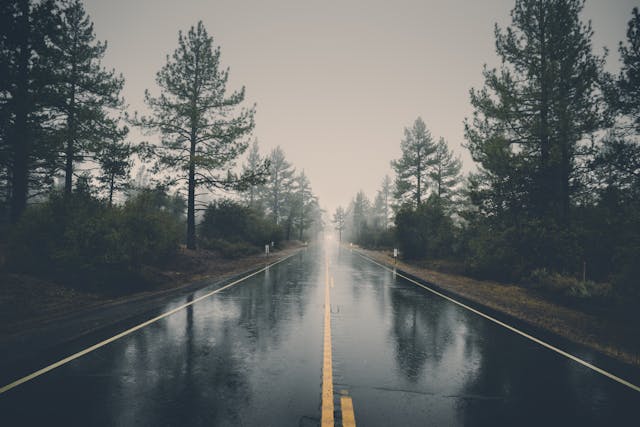Have you heard about Chandigarh's new initiative on rainwater harvesting? Water is the essence of life. Yet, with rising demand, urbanization, and climate change, water scarcity is becoming a pressing concern globally. A sustainable solution that is gaining momentum is rainwater harvesting. Recently, Chandigarh has taken a remarkable step by mandating the installation of rainwater harvesting structures (RWHS) across all government buildings including schools, colleges, and Anganwadi centers.
This move aligns with the Government of India's "Jal Shakti Abhiyan: Catch the Rain 2025" campaign and sets an inspiring example for the rest of the country.
In this blog, we explore what rainwater harvesting is, its benefits, and why every building — be it government or private — should adopt it.
What is Rainwater Harvesting?
Rainwater harvesting is the process of collecting and storing rainwater from rooftops, land surfaces, or rock catchments using simple techniques like tanks or complex systems like underground reservoirs. Instead of letting rainwater run off and waste away, it is collected for reuse — for irrigation, domestic use, groundwater recharge, and sometimes even potable use after proper treatment.
Chandigarh’s Big Step Toward Water Conservation
In a high-level meeting chaired by UT Chief Secretary Rajeev Verma, Chandigarh has decided that all government institutions must install rainwater harvesting systems. A week-long cleanliness drive between May 1 and May 7, 2025, will focus on maintaining existing systems. Additionally, projects like desilting check dams in Sukhna Lake and completing the Amrit Sarovar-Dhanas project by November 2025 are part of this broader water conservation effort.
Such initiatives highlight how critical rainwater harvesting is, not just as an option, but as a necessity for sustainable living.
Benefits of Rainwater Harvesting
1. Conserves Water Resources
Rainwater harvesting helps reduce dependency on groundwater and municipal water supply. This is crucial, especially in regions facing frequent droughts or depleting groundwater levels.
2. Reduces Water Bills
For residential and commercial buildings, using harvested rainwater for activities like gardening, car washing, and toilet flushing can significantly cut down monthly water bills.
3. Promotes Groundwater Recharge
When rainwater is allowed to percolate into the ground, it replenishes the groundwater table, which is vital for maintaining ecological balance and ensuring future water security.
4. Prevents Urban Flooding
By capturing rainwater, cities can manage stormwater runoff more efficiently, reducing the chances of waterlogging and urban flooding during heavy rains.
5. Environmentally Friendly
Harvesting rainwater reduces the need for energy-intensive water supply systems and minimizes the environmental footprint of water usage.
6. Easy to Maintain
Rainwater harvesting systems are generally low-maintenance once installed. Regular cleaning and checks ensure their longevity and efficiency.
Why is Rainwater Harvesting Critical Today?
The global population is growing rapidly, and with it, the demand for water. Climate change is making rainfall patterns more unpredictable. In India alone, many cities including Chennai, Bengaluru, and Delhi are facing severe water shortages. Traditional sources like rivers and groundwater are no longer sufficient to meet the increasing demands.
By adopting rainwater harvesting at every level — individual, community, and government — we can create a decentralized, resilient water supply system. It ensures that every drop of rain is put to good use rather than flowing wastefully into drains.

How Can You Set Up a Rainwater Harvesting System at Home?
Setting up a basic rainwater harvesting system is easier than you think:
-
Catchment Area: Your rooftop acts as the catchment.
-
Gutters and Pipes: Install a proper pipeline system to channel rainwater from the roof to the storage tank.
-
First Flush Device: This helps discard the initial dirty rainwater.
-
Storage Tank: A clean tank to store the filtered rainwater.
-
Filtration Unit: For filtering leaves, dirt, and other debris.
Professional help can make the setup even more efficient, especially if you plan to use the water for potable purposes.
Hire the professionals for Rainwater Harvesting setup at your homes and industries
Conclusion | Rainwater Harvesting Benefits & Chandigarh
Chandigarh’s move to implement rainwater harvesting across government institutions is a visionary step toward a sustainable future. It not only aligns with national goals like the "Jal Shakti Abhiyan" but also sets a benchmark for other states and cities to follow.
Rainwater harvesting is not just a government initiative — it’s a personal responsibility. Whether you are an individual homeowner, a business, or part of a community, adopting rainwater harvesting can make a massive difference.
Remember: Every drop counts. Let’s catch the rain before it drains away!





2 Comments
John Doe
Posted on: March 13, 2025Leverage agile frameworks to provide a robust synopsis for high level overviews. Iterative approaches to corporate strategy foster collaborative thinking to further the overall value proposition.
John Doe
Posted on: March 13, 2025Leverage agile frameworks to provide a robust synopsis for high level overviews. Iterative approaches